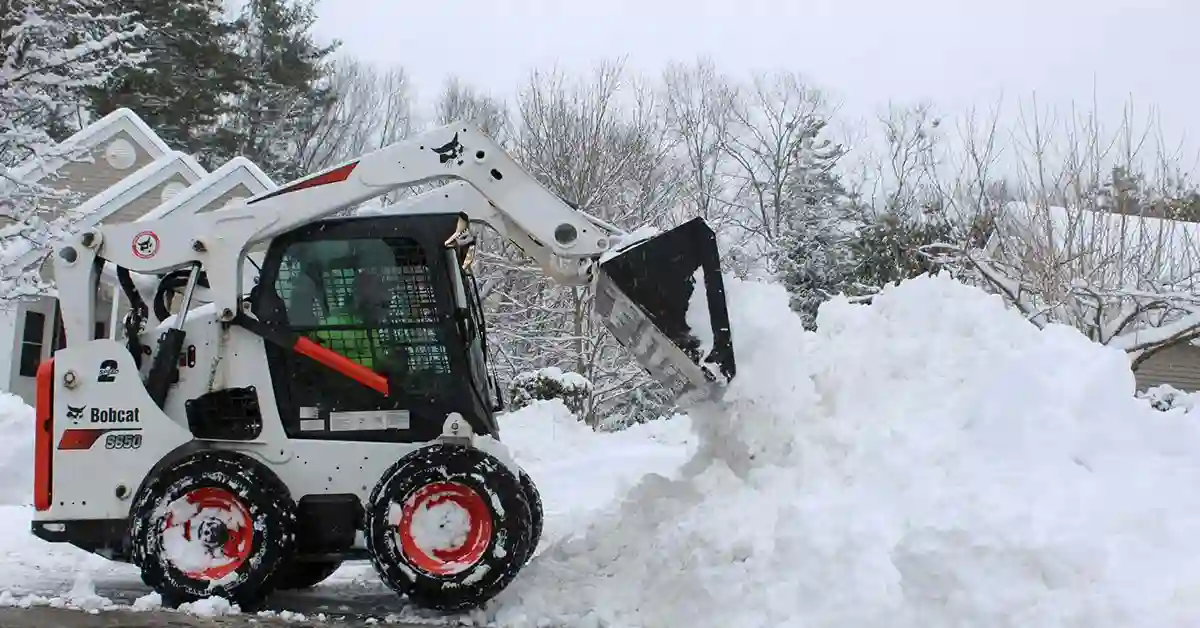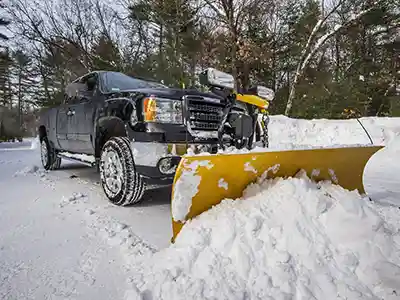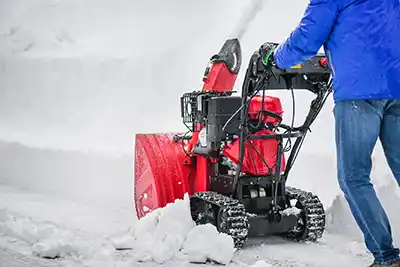
Snow removal services are crucial in ensuring that properties remain safe and accessible during winter. Whether it's residential driveways, commercial parking lots, or public spaces, correctly estimating and bidding on snow removal jobs can significantly impact your business's profitability.
A well-structured bid must account for all the necessary costs, while also remaining competitive enough to win contracts. This guide will provide you with a comprehensive breakdown of how to create a winning snow removal pricing formula, how to structure bids, and strategies for gaining an edge over competitors.
The Importance of Accurate Snow Removal Bidding
Accurately bidding on snow removal jobs is not just about getting your foot in the door with potential customers. It’s about ensuring that every job you take on is profitable. If your bid is too low, you may secure the contract but struggle to cover costs, leading to losses. On the other hand, if your bid is too high, potential customers will turn to cheaper alternatives. Finding the right balance and competitive snow plow removal rates is critical for long-term business success.
Understanding Key Snow Removal Costs
Bidding accurately starts with a clear understanding of the costs associated with each job. You need to cover fixed expenses like equipment, snow removal software and insurance, along with variable costs like labor and materials. Here's a detailed breakdown of the key costs to consider:
Equipment Costs
Your equipment is one of the biggest investments in the snow removal business. Plows, snow blowers, salt spreaders, and other machinery are essential, but they come with substantial costs. Consider the initial purchase price, the cost of regular maintenance, and fuel costs, all of which should be included in your bid calculations.
- Depreciation: Equipment depreciates over time. You should calculate how much value your equipment loses each year and incorporate that cost into your bids.
- Maintenance: Snow removal equipment faces wear and tear, particularly during heavy use. Regular maintenance is necessary to keep it in good condition. Factor in routine checks, oil changes, and repairs.
Labor Costs
Labor is another significant cost factor. Accurately estimating the number of labor hours required for each job is critical. Labor costs will depend on the size of the property, the complexity of the job, and the number of employees on your team.
- Hourly Wages: Determine the hourly wages for your crew, including overtime pay for long shifts during major snowstorms.
- Scheduling Logistics: Consider how quickly you can move from one job to another, especially when working with multiple contracts. Overlapping schedules or delays due to weather can increase labor costs, so build flexibility into your estimates and use scheduling software.
Material Costs
Snow removal rates are impacted by materials such as salt, sand, or deicing chemicals. These costs can fluctuate throughout the winter based on demand and availability, so ensure you have an accurate estimate of how much material each job will require.
- Salt and Deicers: These materials are essential for preventing ice buildup after the snow has been cleared. Ensure your bid reflects the cost of purchasing and transporting these materials.
- Quantities: Estimate the amount of salt or deicer required based on the area you are servicing. Larger lots or high-traffic areas will naturally need more.
Insurance and Overhead
Running a snow removal business comes with liability risks, especially when working in commercial areas where there’s high foot traffic. Insurance costs, such as liability insurance to cover accidents or property damage, should be included in your bid.
- Insurance Premiums: The cost of insuring your business and employees varies depending on the type of jobs you take on (e.g., residential vs. commercial). Include your annual insurance premiums in your overhead costs.
- Administrative Costs: Don’t forget about the indirect costs of running a business, such as office supplies, billing software, marketing, and legal fees.

Snow Removal Pricing Formula
Once you have a clear understanding of your costs, you can develop a snow removal pricing calculator that ensures profitability while remaining competitive. Snow removal bids are typically based on a per-square-foot rate, with additional considerations for labor, materials, and other factors like snow depth.
Base Rate per Square Foot
The foundation of your snow removal pricing formula is the base rate you charge per square foot. This rate will vary depending on factors like the size of the job, the type of property (residential vs. commercial), and local market conditions.
- How to Determine the Base Rate: Research your competitors rates in your area, and consider your own cost structure. Typically, the base rate for residential properties is lower than for large commercial lots.
Example Calculation:
If you charge $0.08 per square foot and are tasked with clearing a 5,000-square-foot parking lot, your base rate would be:
Base Price = 5,000 sq ft x $0.08 = $400
Snow Depth Modifier
Deeper snow requires more time, labor, and material to clear. Therefore, it’s common to apply a snow depth modifier to your base rate. For example, you might charge 20% more for snowfalls between 6-10 inches and 50% more for anything over 10 inches.
- Adjusting for Snow Depth: Apply a multiplier to your base rate depending on the depth of snow.
Example Adjustment:
For a 10,000-square-foot lot with 8 inches of snow:
Adjusted Price = Base Price x 1.2 (for 6-10 inches of snow)
Per-Event vs. Seasonal Pricing
There are two primary pricing models in snow removal: per-event and seasonal contracts. Each has its benefits and considerations:
- Per-Event Pricing: Charge for each snow removal service based on the event (i.e., each snowfall). This is a flexible option that allows you to charge based on the actual work performed.
- Seasonal Contracts: Offer a flat rate for the entire season. This provides guaranteed income throughout the winter months, but requires careful estimation of how many snowfalls you will need to handle.
Driveways vs. Parking Lots
Bids for residential driveways and commercial parking lots should be structured differently. Driveways tend to be smaller and simpler, with fewer obstacles. Parking lots, on the other hand, are much larger and often have additional factors like curbs, parked cars, and pedestrian walkways.
- Driveways: Typically smaller jobs, with pricing based on the time it takes to clear the driveway and any additional services (e.g., sidewalk clearing).
- Parking Lots: Larger areas that require more labor and material. Parking lots may also require more detailed planning to account for obstacles like curbs, light poles, or traffic.

Factors Affecting Snow Removal Pricing
Several external factors will influence your snow removal pricing, and it’s important to adjust your bids accordingly. These factors can range from regional weather patterns to the type of customer you’re working with.
Location and Regional Demand
Prices for snow removal vary greatly depending on your geographic location. In regions with heavy and frequent snowfall, the demand for snow removal services is higher, which can justify charging more. Urban areas may also come with additional logistical challenges that can increase costs.
- Weather Conditions: In areas where snowfall is sporadic but intense, such as the northeastern U.S., per-event pricing might be more common, while regions with steady snowfall throughout the winter, like the Midwest, might favor seasonal contracts.
Customer Type
The type of customer—residential, commercial, or municipal—will significantly impact how you structure your bid. Each customer has different needs and expectations for snow removal services.
- Residential Customers: These customers typically require smaller jobs, such as driveway and walkway clearing. They often prefer per-event pricing and may not need services as frequently as commercial customers.
- Commercial Customers: Businesses and commercial property managers require regular, consistent snow removal services to keep parking lots, sidewalks, and entryways clear. These jobs are larger and often more complex, leading to higher costs.
- Municipal Contracts: Local governments and municipalities often require large-scale snow removal services for roads and public spaces. Bidding for these contracts is highly competitive, but they can provide steady work throughout the winter.
Urgency of Service
The urgency with which a customer needs snow removal can significantly affect your bid. During a snowstorm, customers may request immediate service, and providing this level of responsiveness requires you to allocate more resources, such as additional crews or overtime labor.
- Priority Service: Offering a priority service option where customers can pay a premium for quicker response times is a great way to increase revenue while managing client expectations.
Weather Patterns
Understanding local weather patterns is crucial to structuring your bids and determining whether per-event or seasonal pricing makes more sense. Regions with frequent, moderate snowfalls will need more consistent service than areas that experience occasional heavy storms.
- Frequency of Snowfalls: Anticipate how many times you’ll need to clear snow for a given area throughout the winter season based on historical data.
- Average Snow Depth: Estimate the average depth of snow for your region to better determine labor and material costs.
Creating a Competitive Bid
Winning bids is not just about having the lowest price. Instead, it’s about offering value, building trust, and positioning your company as the best option. Below are key strategies for creating a bid that stands out:
Offer Value-Added Services
To differentiate yourself from competitors, offer additional services that provide extra value. This might include sidewalk clearing, ice control, or follow-up visits to ensure the property remains safe after the snow is removed.
- Bundled Services: Create bundled packages where customers can get multiple services at a discounted rate. For example, offer snow removal along with salting services for a combined price.
Highlight Professionalism and Experience
Your experience and reputation can play a huge role in securing contracts, especially for large commercial jobs. Make sure to emphasize your professionalism, the quality of your equipment, and the expertise of your team.
- Customer Testimonials: Include testimonials from satisfied customers to build credibility.
- Certifications and Licenses: If your team has specialized training or certifications for snow removal, such as those offered by professional associations, make sure to highlight these in your bid.
Provide Clear, Detailed Estimates
Transparency is key to building trust with potential customers. Your estimates should break down all costs, including labor, materials, and any potential additional charges (e.g., for deep snow or urgent service). Providing clear, detailed estimates helps prevent misunderstandings later on and demonstrates your professionalism. There are free estimate PDF makers available.
Flexible Payment Terms
Offering flexible payment options can make your bid more attractive to customers, particularly for larger contracts. For example, you could offer payment plans for seasonal contracts or accept credit card payments for per-event services.
- Payment Plans: For commercial or municipal clients, consider offering monthly payment plans for seasonal contracts. This allows customers to spread the cost over time, making it easier to budget for your services.
Sample Bid Calculation
Let’s consider a real-world example to help illustrate how to calculate a snow removal bid. Suppose you’re bidding to clear a 10,000 square-foot parking lot, and the snowfall in your area typically ranges between 6-8 inches.
Here’s how you might calculate the bid:
- Base Rate per Square Foot: $0.08
- Snow Depth Modifier: 1.2 for 6-8 inches of snow
- Labor Cost: $50 per hour
- Estimated Labor Time: 4 hours
- Material Cost (Salt): $100
Step-by-Step Calculation:
Base Price = 10,000 sq ft x $0.08 = $800Adjusted Price = $800 x 1.2 = $960Labor Cost = 4 hours x $50 = $200Material Cost = $100
Total Bid:
Total = $960 + $200 + $100 = $1,260
Conclusion
Crafting a competitive and profitable snow removal bid involves understanding your costs, using a solid pricing formula, and positioning your business to offer the best value to customers. By focusing on the key factors outlined in this guide, equipment, labor, materials, and the needs of your specific market—you can develop bids that win contracts while keeping your bottom line healthy. Always remember, clear communication, detailed estimates, and offering value-added services are crucial to standing out in the snow removal industry.
